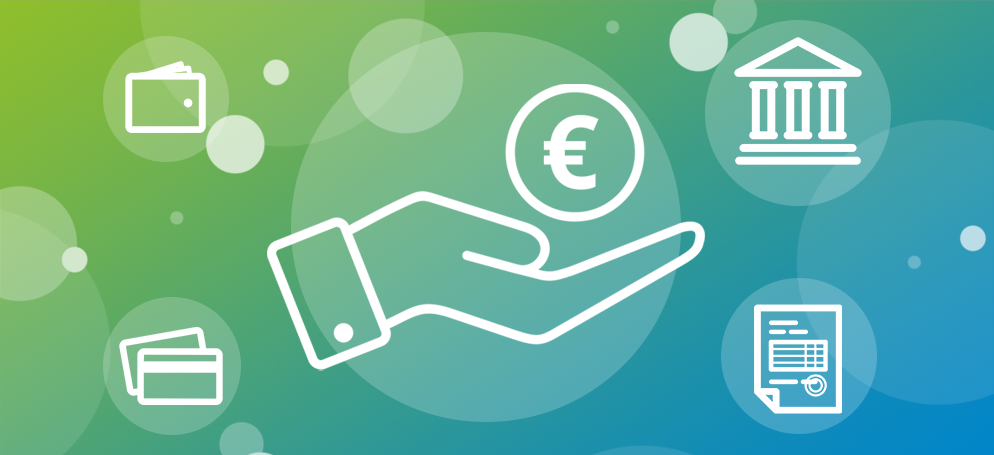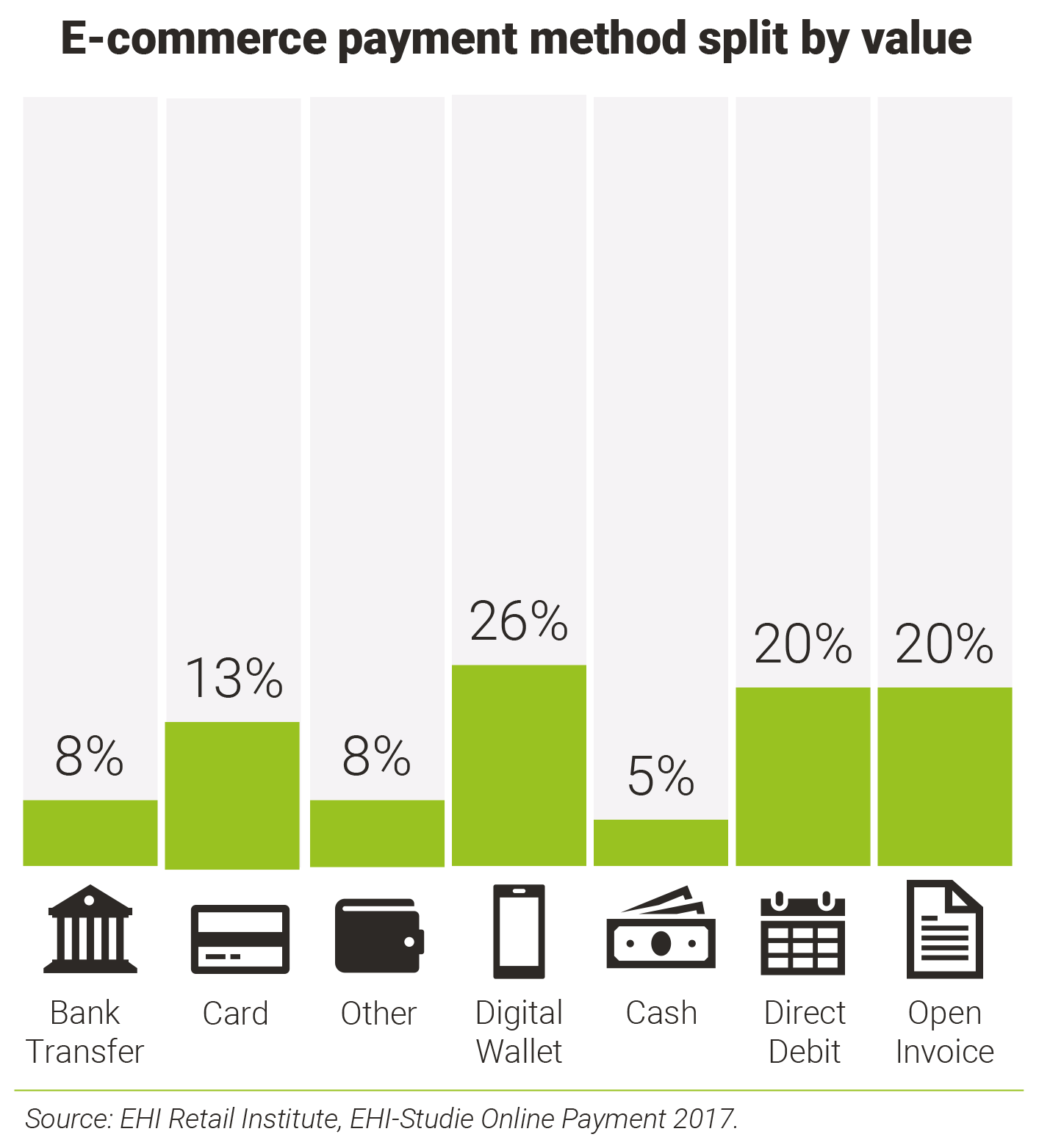
How do German consumers prefer to pay online?
In the UK, over half of online payments involve a card, either credit or debit. The same is true across Europe, right? Wrong. Consumer preferences for online payment methods vary from country to country. Making sure you offer market-specific payment options on your e-commerce site is crucial to your conversion rates.
Take Germany, for instance. Europe’s largest and most powerful economy is surprisingly conservative when it comes to payment methods. Simply put, Germans love cash:
- According to Statista, 80% of point of sale transactions in Germany in the last few years were cash, whilst in France it was 68% and the Netherlands 46%
- The Bundesbank has issued more physical euro notes than all the other eurozone central banks combined
- The number of card terminals in Germany is proportionally less than other European countries
This aversion to cards is reflected online too. In the latest published figures, credit and debit cards make up only 13% of online transactions in Germany and this figure is forecast to fall in the years ahead. Only 25% or so of Germans have a credit card. So, what are the favoured online payment methods?
Open invoices
Open invoices involve the merchant delivering goods with an invoice. Consumers try the goods and either keep them or return them, usually within 14 or 28 days. It’s a popular method because you don’t have to pay upfront or enter sensitive data online (a big concern amongst Germans). The disadvantage to merchants is that rates of return can be high – up to 50% – driving up operational costs. And because consumers take receipt of the goods before paying, fraud can be an issue too.
Third-party bank transfers
Key players include Giropay and SOFORT. Users pay for goods using direct online bank transfers. A third party tool pops up at the point of transaction, users submit their bank details and enter a second step authentication code, then return to the merchant’s site once completed.
Paydirekt
Launched by the larger German banks in 2015, this allows consumers to pay using their own banking system rather than a third party. This eliminates transactions costs for both merchant and consumer.
Direct debits
SEPA – the Single Euro Payment Area – facilitates cross-border payment systems across Europe. It aims to make cross border transfers equivalent to domestic transfers.
E-wallet payments
The big growth area is e-wallet payments. PayPal, Apple Pay and Android Pay are all expected to grow exponentially in the years ahead – driven by the rise in smartphone usage and mobile shopping.
 Getting this right will pay dividends
Getting this right will pay dividends
Germany has one of the most diverse online payment ecosystems in Europe and with one study showing that 80% of Germans will abandon a purchase if the payment methods don’t suit them, getting this wrong can have a big impact on revenue.
Take the time to research and invest in offering the optimal blend of payment options to your customers. Consult one of Oban’s LIMEs (Local In-Market Experts) to help you understand the right mix for your target audience. If you get this right, the potential rewards will be considerable in this important European market.
 Az Ahmed | Marketing Manager
Az Ahmed | Marketing Manager
Oban International is the digital marketing agency specialising in international expansion. Our LIME (Local In-Market Expert) Network provides up to date cultural input and insights from over 80 markets around the world, helping clients realise the best marketing opportunities and avoid the costliest mistakes.